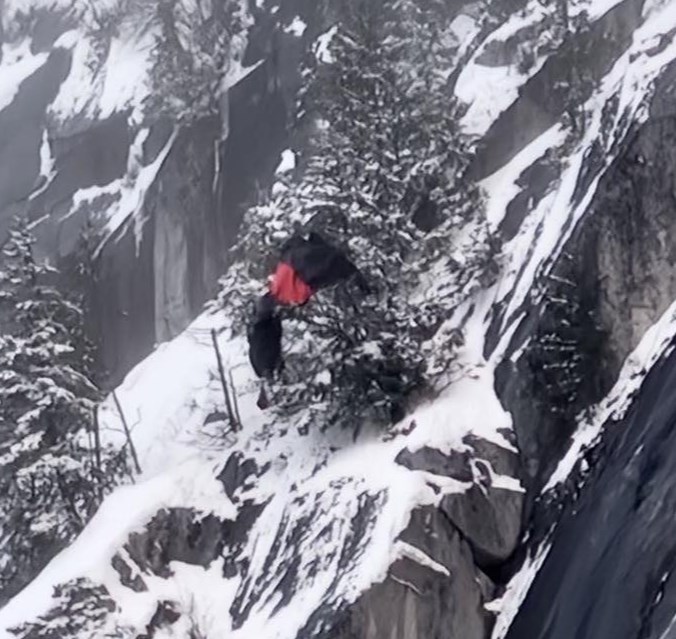It was perfect timing when Squamish Search and Rescue called North Shore Rescue for assistance with a BASE jumper whose parachute had been snagged on a tree on the Stawamus Chief.
North Shore's team leader, Mike Danks, said rescuers on his crew were already loading up the helicopter for a training exercise when they received word from Squamish in the evening of Tuesday, Feb. 28.
Danks said the Squamish team tried a fixed-line rescue but had run out of daylight, so they called for assistance.
"Funny enough, we had … the hoist-equipped night vision helicopter already staffed with our rescue personnel," he said. "We were going to head to Whistler to do a training exercise there. Yeah, so I mean, it worked out — it worked out perfect."
Danks said the operation involved lowering a technician from a helicopter to the stranded jumper, who was luckily uninjured despite the situation.
The technician then used a device called a LEZARD, which enables rescuers to anchor themselves to a tree, rockface, or other object, while being tethered to the helicopter at the same time.
In this case, Danks said, the rescuer anchored themselves to a tree while attending to the jumper. Winter conditions also made things trickier than the average summer rescue.
"That did add another layer of complexity," he said. "When the technician obviously got hoisted down to that site, on most steep slabs with snow on them, I mean, his footing was immediately gone."
Nevertheless, the mission was a success. Crews winched up the recreationalist and made it back safely.
"This is something we've been training for, for a long time and calls like this — they may look kind of spectacular, but they're pretty routine calls," Danks said.
Should those rescued have to pay for service?
On the ever-present topic of whether people being rescued should have to pay for the service, Danks said the service should remain free of charge.
When rescues are based on fees, people in trouble delay the call. These delays create situations that put both themselves and rescuers at increased risk.
"So we have seen the direct result of people not calling for help, and, in some circumstances, that means those people are never found," said Danks. "And we've had that on the North Shore. And if it's going to encourage people to delay calling, and it puts our members further at risk, well, we have an issue with that. We have a serious issue, because our safety is number one."
Finally, Danks encouraged people to support their local SAR associations.
"We love working with Squamish SAR," he added. "They're a very highly technical group. And I think the relationship that we have amongst the search and rescue teams on the southwest is incredible. So I think the communities are incredibly lucky to have such a service available to them."





